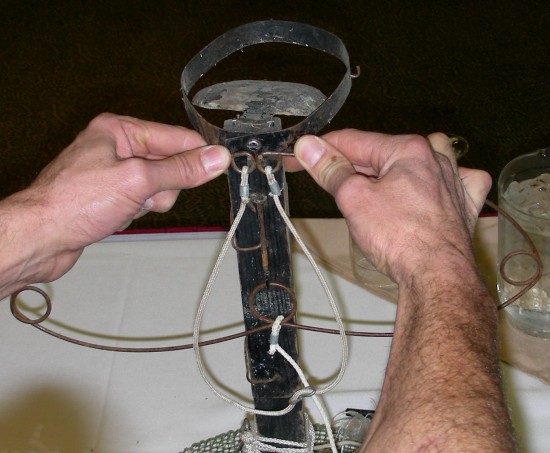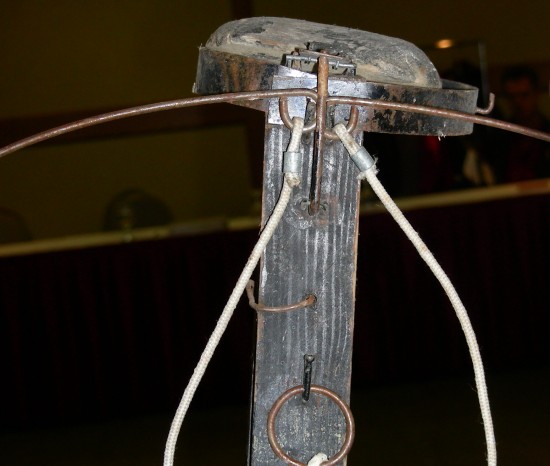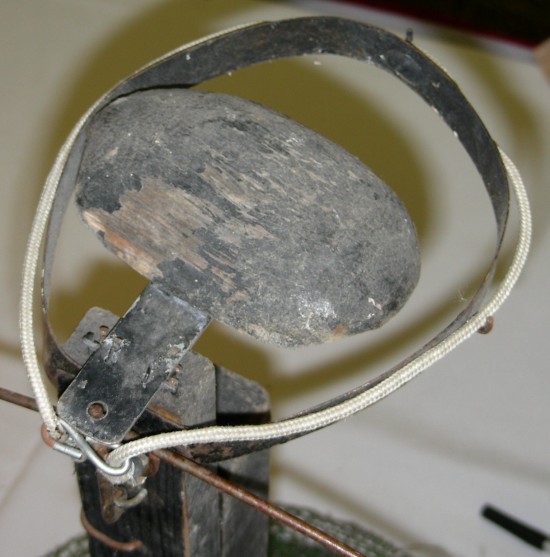|
The Verbail trap is a pole-mounted apparatus
that has been quite successful for some in catching Short-eared Owls.
The basic principle of it is that the trap is attached to a fence post
or other pole in an open area, preferably away from any other perches of
similar or greater height, so that the owl will be attracted to land on
it. The trap can also be made more attractive by placing a small
rodent in a protected cage at the base of the pole upon which the trap
is set. There is a small platform trigger upon which the bird
lands, activating a spring release that causes a rope noose to be
released and close around the bird's feet. This is tied to a
separate line that allows the bird to flutter to the ground safely, so
that it is never at risk of hanging by its feet. It is important
to note that such traps may be operated only by those who have the
appropriate federal permits, and that they should be watched at all
times so that birds caught can be removed as soon as possible.
Below, a few photos illustrating the setup
of a Verbail trap, and a brief video showing how it is triggered.
Thanks to Jim Duncan of Manitoba Conservation for providing the trap and
demonstrating its operation. All photos/videos by Marcel Gahbauer.

The first step in setting
the trap is putting the spring on the post. There are two nails on
the rear of the post upon which the two ends of the spring are placed.
The rope that constitutes the noose is at this point hanging
(permanently attached) to the two ends of the spring.

The next step is to raise
the holding pin to lock the two ends of the spring in place until
release. Note that the top of the holding pin extends just
slightly through a metal tab connected to the trigger platform, so that
when the trigger is depressed, the tab rises, and the holding pin falls
free, in turn releasing the spring.

The noose has now been set
in place. The metal ring surrounding the trigger platform is there
simply to provide support for the noose, and as such, it has three small
prongs around its circumference to support the rope (only the one on the
right is visible). Also note that the "S-ring" that was previously
hanging loose at the bottom of the loop in the first photo has now been
positioned behind the pole, and behind the holding pin. Thus, when
the trigger is depressed and the holding pin falls, it takes the S-ring
with it, resulting in the tightening of the rope noose around the legs.

The full set up of the
Verbail trap, this arrangement including an attached wire cage base
within which a small mouse could be placed to attract the owls to the
trap. Note the second rope attached to the spring, which will
ensure that the owl can flutter to the ground safely, but at the same
time will remain confined to a short distance from the pole.
Click here
for a short video illustrating the operation of the Verbail trap.
(Warning, you may want to turn down your volume, as it is loud, and not
relevant to the video in any case)
|




